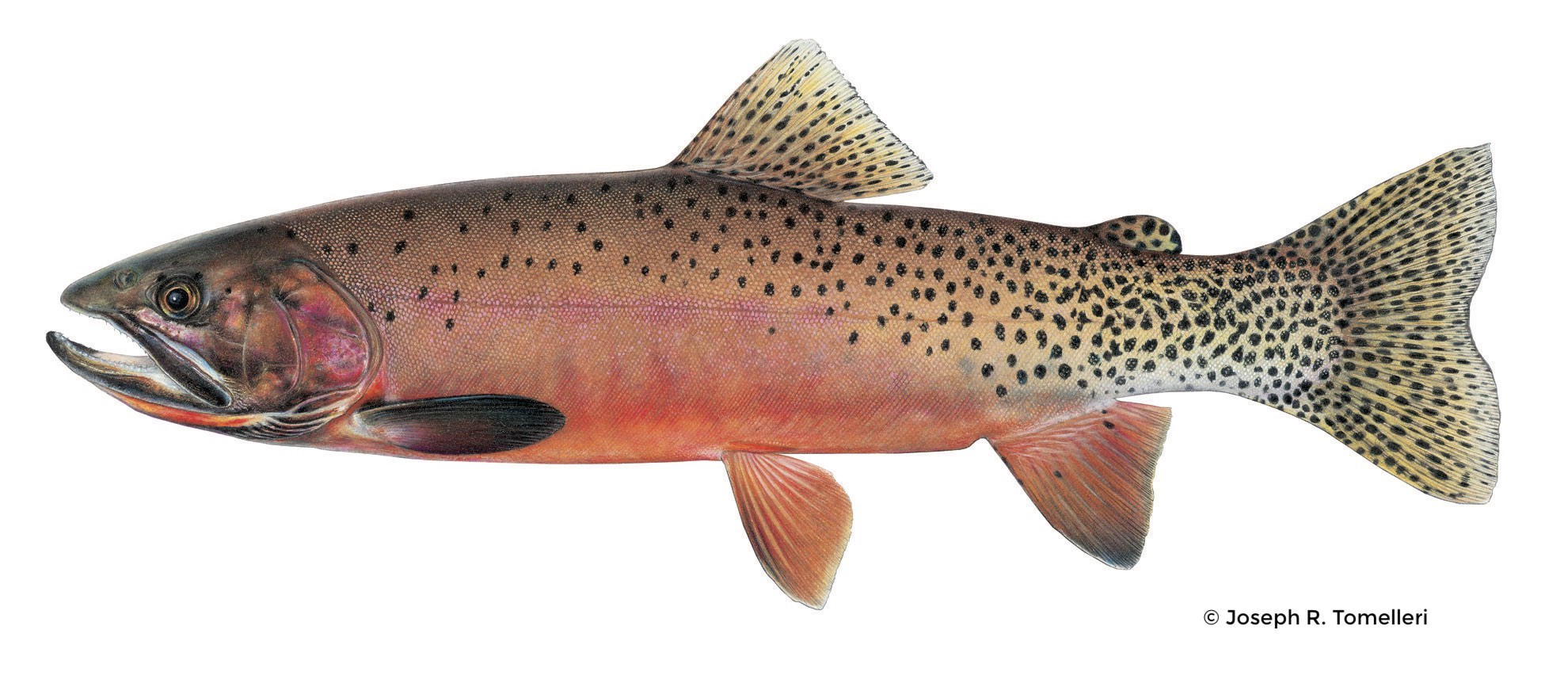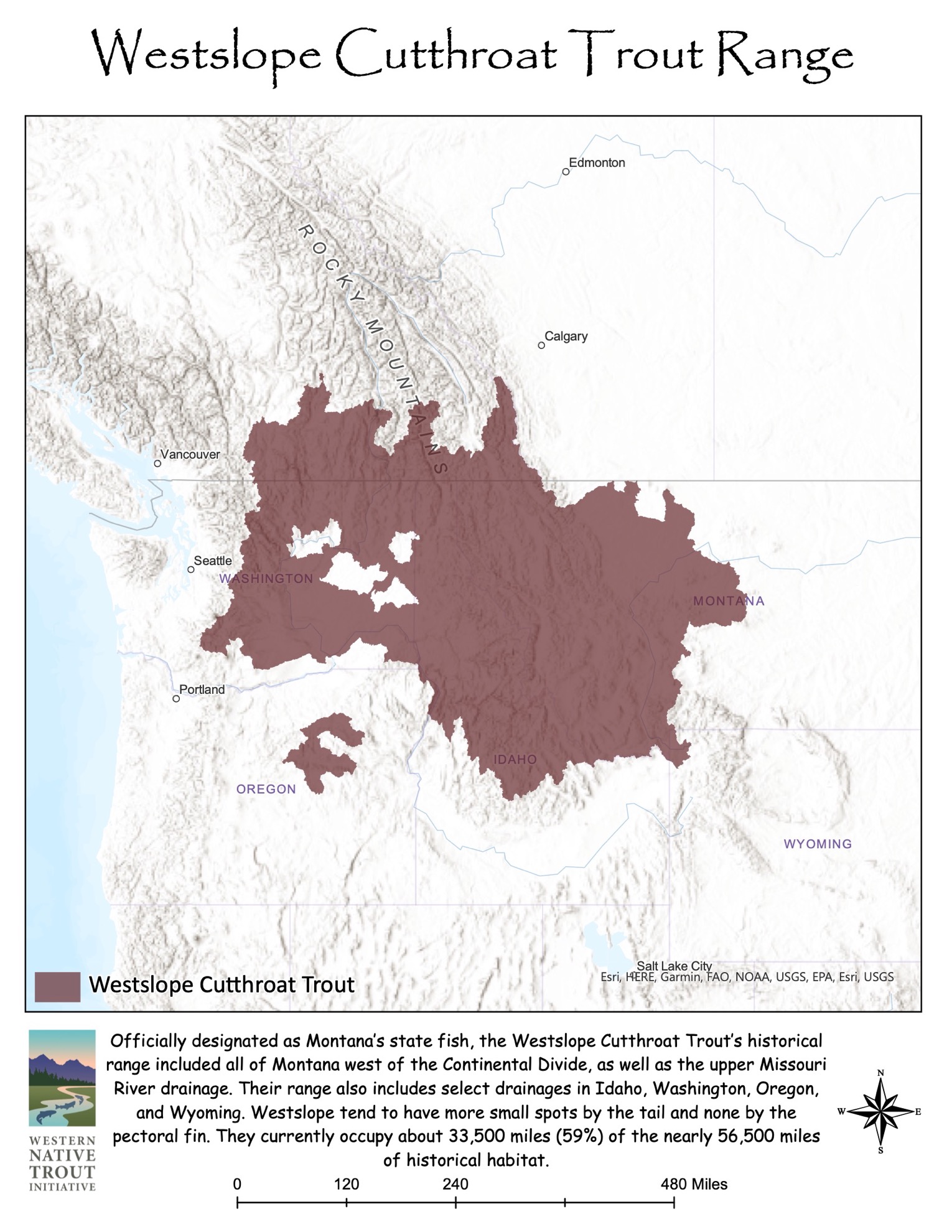
Officially designated as Montana’s state fish, the Westslope Cutthroat Trout’s historical range included all of Montana west of the Continental Divide, as well as the upper Missouri River drainage. The average size of these fish is 6 to 16 inches, depending on habitat. It is often difficult to distinguish the Westslope from other cutthroat species, but it tends to have more small spots by the tail and none by the pectoral fin. Also, the Westslope Cutthroat Trout is more of a silvery or greenish color than other cutthroats.
Although commonly associated with the state of Montana, the historic range of Westslope Cutthroat Trout (Oncorhynchus clarkii lewisi) is the most widespread geographically among the 14 subspecies of inland cutthroat trout. Westslope Cutthroat Trout (WCT) are native to streams and lakes in the upper Columbia River basin (Idaho and Montana), the Methow River and Lake Chelan drainages (Washington), the John Day River drainage (Oregon), the headwaters of the South Saskatchewan River (Montana), and the upper Missouri River basin (Montana and Wyoming). WCT currently occupy about 33,500 miles (59%) of the nearly 56,500 miles of historical habitat.
The introduction and spread of nonnative trout such as brook, rainbow, brown, and lake trout is considered by many fisheries scientists to be the major threat to WCT. As with other cutthroat subspecies, the distribution and numbers of WCT have declined due to human influences such as livestock grazing and other agricultural practices, logging, road-building, mining, dam construction, loss of riparian habitat, erosion, sedimentation, and placement of barriers to fish migration. The inability to stop or reverse habitat degradation is one of the major obstacles to the continued improvement of the WCT status, although this concern is ameliorated somewhat by the fact that over 50% of current occupied WCT habitat is in roadless and wilderness areas. In 2003, on the basis of the available information, the U.S. Fish and Wildlife Service concluded that the WCT is not likely to become a threatened or endangered species within the foreseeable future.
At present, there are multiple State, Federal, Tribal and private conservation efforts that are working to improve the status of WCT in the northwestern U.S. Projects have generally followed a site- specific/opportunity- based approach rather than a watershed approach, with varied results and accomplishments.
Between 2006 and 2020, the Western Native Trout Initiative has contributed over $725,754 to 30 projects benefiting Westslope Cutthroat Trout in Idaho, Oregon, Montana, and Washington. Projects have included a 2009 range-wide status assessment, numerous barrier removal efforts, as well as stream and riparian restoration and genetic assessments.

Additional Resources
READ about Washington Department of Fish and Wildlife’s Westslope Cutthroat Trout management.
READ the Idaho Fish and Game Department Management Plan for Westslope Cutthroat Trout conservation.
READ about Montana Fish Wildlife and Parks’ Westslope Cutthroat Trout conservation.
READ about Oregon Department of Fish and Wildlife’s Westslope Cutthroat Trout conservation.
Bozeman Daily Chronicle (May 21, 2015): From worry to westslope: Cutthroat trout in Madison River spells success for Cherry Creek project
